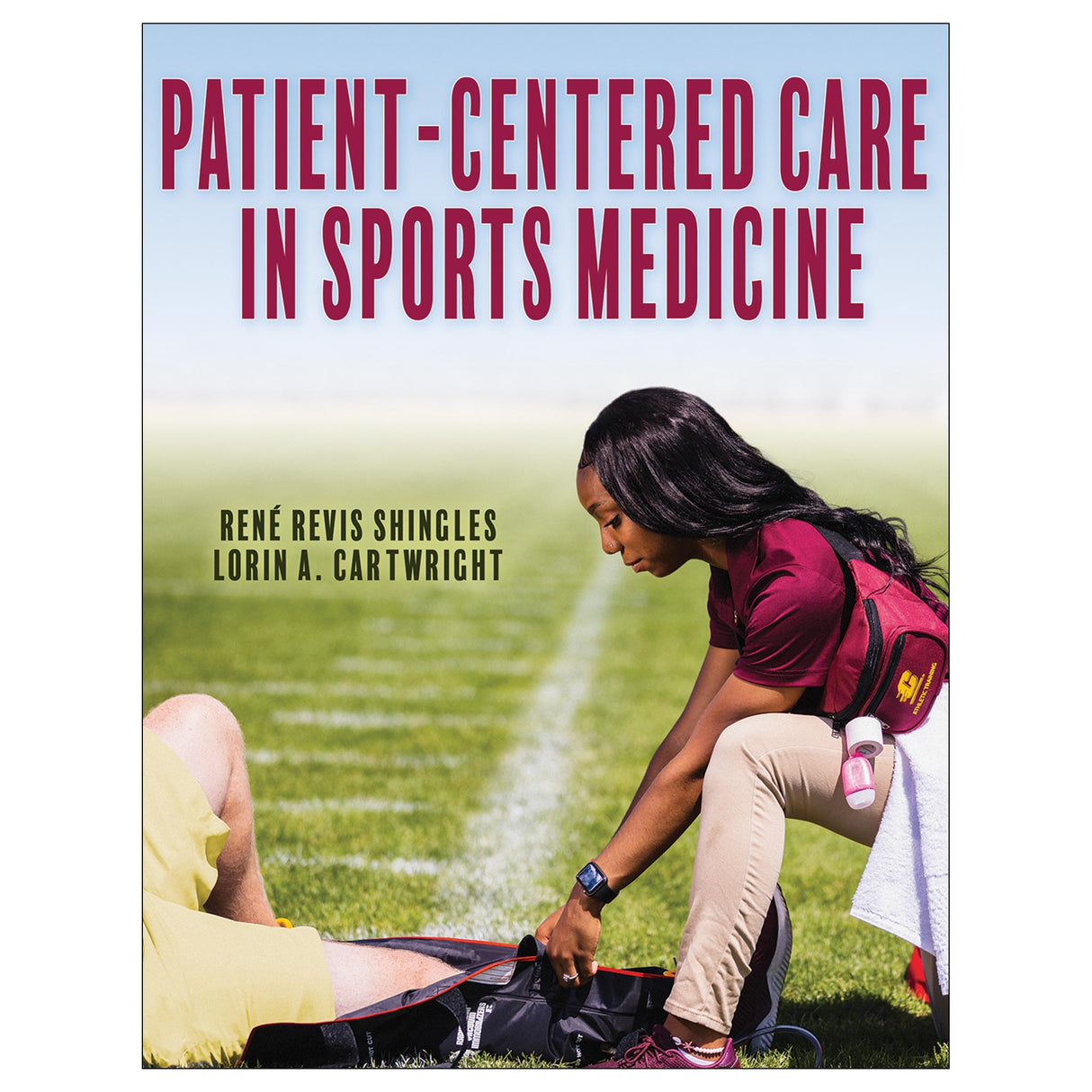Patient-Centered Care in Sports Medicine
$89.00 USD
Patient-Centered Care in Sports Medicine defines patient-centered care, explains its importance for every patient interaction, and shows how to model patient-centered care in daily practice. Students will come to better understand how social identities related to race, class, gender, and sexuality shape the patient–health care provider relationship, as well as how a provider’s own social identities may influence the care they provide. Self-assessment tools will help students evaluate their personal stereotypes, implicit biases, and prejudices, while patient-centered communication models provide guidance on eliciting crucial information from patients to make sure their needs are addressed.
The second half of the book offers invaluable knowledge about the largest cultural groups within the United States, the LGBTQIA+ community, and individuals with disabilities. For each culture, the discussion addresses cultural information such as primary languages and communication styles, family structure, daily living and food practices, and more. This rich discussion allows students to build cultural awareness for use in their future careers.
Throughout the text, chapter objectives, review questions, case studies, and key terms help students comprehend and retain the information presented. Athletic Training Professionals in Their Own Words sidebars feature noted athletic trainers discussing their experiences in various settings. Forms that are beneficial in health care settings—including a satisfaction survey, a facility checklist, and sample policies and procedures—are provided in the book.
Patient-Centered Care in Sports Medicine serves as an excellent guide for institutions and individual providers who desire to become more competent when working with athletes or patients from a variety of backgrounds.
Audience
A textbook for athletic training, physical therapy, fitness, rehabilitation, and health care courses. A reference for professionals in those fields.Chapter 1. Defining Patient-Centered Care
What Is Patient-Centered Care?
Frameworks of Patient-Centered Care
Why Is Patient-Centered Care Important?
Terminology and Language
Summary
Chapter 2. Demographics, Social Determinants of Health, and Health Disparities
What Are Health Disparities?
Changing Demographics
Social Determinants of Health
Relationship Between Demographics, Social Determinants of Health, and Health Disparities
Reducing Health Disparities
A Social Justice Lens: Advocating for Patients
Summary
Part II. Patient-Centered Awareness
Chapter 3. Understanding Difference
Unpacking the Luggage
Repacking the Luggage
Summary
Chapter 4. Understanding Oneself
Cultural Awareness and Self-Assessment
Everyone Has Culture
Generalizations, Stereotypes, Prejudices, and Implicit Bias
Microagressions : Microassaults, Microinsults, Microinvalidations, and Environmental Microaggressions
Advantages, Disadvantages, and Privileges
Summary
Part III. Patient-Centered Communication
Chapter 5. Eliciting Information
The Explanatory Models Approach, Outline for Cultural Formulation, and Cultural Formulation Interview
Other Models for Eliciting Information
Eliciting Information Through Use of an Interpreter
Patient Forms and Data Gathering
Summary
Chapter 6. Patient-Centered and Culturally Based Physical Assessment
Taking an Oral History
Inspecting and Observing Physical Signs
Palpating
Summary
Chapter 7. Patient and Family Engagement
Framework for Patient and Family Engagement
Factors That Influence Patient and Family Engagement
Strategies for Addressing Barriers to Engagement
Summary
Chapter 8. Introducing Patient-Centered Care in the Athletic Training Facility
Implementing Patient-Centered Care
Implementation Considerations
Summary
Part IV. Patient-Centered Knowledge
Chapter 9. Native Americans
American Indians
Native Alaskans
Summary
Chapter 10. Asian Americans and Pacific Islander Americans
Chinese Americans
Indian Americans
Filipino Americans
Summary
Chapter 11. Black Americans
African Americans
Nigerian Americans
Jamaican Americans
Summary
Chapter 12. Latino and Hispanic Americans
Mexican Americans
Puerto Ricans
Cuban Americans
Summary
Chapter 13. White Euro-Americans
German Americans
Irish Americans
English Americans
Summary
Chapter 14. Middle Eastern North African Americans
Iraqi Americans
Egyptian Americans
Lebanese Americans
Summary
Chapter 15. Lesbian, Gay, Bisexual, Transgender Americans
Overview and Framework
Historical Perspectives
Demographic Characteristics
Cultural and Psychosocial Challenges
Coming Out or Inviting In
Lesbian
Gay
Bisexual
Transgender
Summary
Chapter 16. Americans With Disabilities
Limb Deficiencies
Deaf or Hard of Hearing
Blindness or Limited Vision
Summary
Appendix A. Satisfaction Survey
Appendix B. Patient-Centered Athletic Training Facility Guidelines and Checklist
Appendix C. Sample Policies and Procedures
Appendix D. Religious and Spiritual Orientations
The Explanatory Models Approach
Understanding cultural intersectionality
 American Sign Language (ASL) alphabet
American Sign Language (ASL) alphabet Framework for patient and family engagement
Framework for patient and family engagement The twelve body meridians
The twelve body meridians Mexican herbal remedies
Mexican herbal remedies
All ancillaries are free to adopting instructors through HKPropel.
Test package. Contains questions in true-false, fill-in-the-blank, short-answer, and multiple-choice formats. The files may be downloaded for integration with a learning management system or printed for use as paper-based tests.
Presentation package. Features PowerPoint slides of text, artwork, and tables from the book that can be used for class discussion and presentation. The slides in the presentation package can be used directly within PowerPoint or printed to make handouts for students. Instructors can easily add, modify, and rearrange the order of the slides.
Image bank. Includes most of the figures and tables from the text, sorted by chapter. The bank can be used in developing a customized presentation based on specific course requirements.





